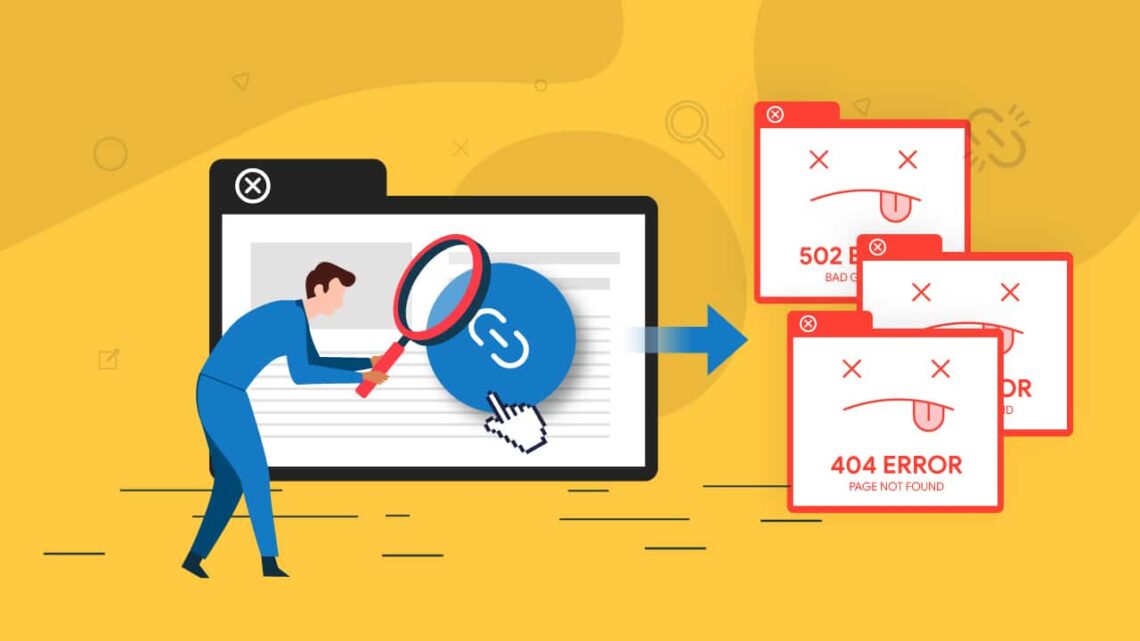Broken link building is one of the most effective and often underutilized SEO strategies available. It involves finding broken links on other websites, creating relevant content to replace the dead links, and then reaching out to the website owner to suggest your content as a replacement. This approach benefits both parties — the website owner fixes a broken link, and you earn a valuable backlink in return.
In this article, we’ll explore the step-by-step process of broken link building, why it works, how to find broken link opportunities, and how to effectively reach out to webmasters to turn dead links into SEO gold.
Why Broken Link Building Works
Broken link building works because it solves a common problem for webmasters: broken links. These links can negatively affect user experience and may even harm a site’s search engine rankings if left unresolved. By offering a helpful solution, you provide value to the website owner while acquiring a high-quality backlink for your own site.
Here’s why broken link building is an effective SEO strategy:
- High-Quality Backlinks: Because you’re targeting websites with broken links, you’re often reaching out to authoritative, established sites. These sites usually have good domain authority, which means the backlink you receive can carry significant SEO value.
- Providing Value to Website Owners: Rather than simply asking for a backlink, broken link building is about providing a solution to a problem (i.e., fixing a broken link). This value-driven approach increases your chances of success compared to cold outreach for link-building purposes.
- Improved User Experience: By fixing broken links, you’re helping to improve the user experience on the host website. This enhances the credibility and usability of the website, which is a win-win for both you and the site owner.
- White Hat Strategy: Broken link building is considered a white hat SEO strategy and it endorse many Professional Seo Services Provider in Dubai. It adheres to search engine guidelines and focuses on providing value rather than manipulating search results.
The Step-by-Step Process of Broken Link Building
Now that we understand why broken link building works, let’s look at the step-by-step process you can follow to leverage this technique.
1. Find Relevant Broken Links
The first step in broken link building is to find broken links on relevant websites in your niche or industry. There are several tools and methods you can use to identify broken links:
- Ahrefs: Ahrefs’ Site Explorer tool allows you to enter a competitor’s website or any site within your niche and see all the broken outbound links on their pages. This is an excellent way to quickly identify broken link opportunities.
- Check My Links (Chrome Extension): This free Chrome extension checks web pages for broken links. When you visit a page and run the extension, it highlights all the broken links on the page, making it easy to spot link-building opportunities.
- Google Search Operators: You can also use Google search operators to find broken link opportunities. For example, search for “[your keyword] + inurl
” or “[your keyword] + intitle
” to find resource pages related to your niche. Then, manually check these pages for broken links.
2. Create High-Quality Replacement Content
Once you’ve identified broken links, the next step is to create or find content on your website that can serve as a suitable replacement. The key here is to ensure your content closely matches the topic and purpose of the original broken link. If the broken link was pointing to a guide on “how to start a blog,” you should have a similar guide on your website.
If you don’t have content that matches the broken link, consider creating new content. This is often necessary, but it can be worth the effort if the website is high-authority and you’re likely to earn a valuable backlink.
Your content should be:
- Comprehensive: Make sure it covers the topic thoroughly. Longer, in-depth content tends to perform better in search rankings and is more likely to be accepted by the website owner.
- Well-Written: High-quality writing is essential. Poorly written content will likely be rejected.
- SEO-Optimized: Ensure your content is optimized for the right keywords so it performs well in search rankings.
3. Reach Out to Website Owners
Once you’ve identified broken links and created suitable content, the next step is to contact the website owner and suggest your content as a replacement. Your outreach email needs to be concise, professional, and respectful of the webmaster’s time. Here’s an effective email template you can use:
4. Follow Up (If Necessary)
Webmasters are busy, and it’s not uncommon for your initial email to get overlooked. If you don’t receive a response after a week or two, it’s a good idea to send a polite follow-up email. Keep it short and simple, reminding them of the broken link and your proposed solution.
Be sure not to send too many follow-ups, as this can come across as pushy or spammy. If you don’t get a response after a second follow-up, it’s best to move on to other prospects.
5. Monitor and Track Your Success
Once your broken link building outreach starts to yield results, it’s important to track your progress. You can monitor the success of your efforts using tools like Ahrefs or Google Search Console to see when backlinks are secured. Keep a record of your successful outreach efforts, which blogs accepted your content, and which links were replaced.
This tracking will also help you refine your process and identify what’s working well, whether it’s certain types of websites, outreach emails, or content.
Tips for Successful Broken Link Building
To maximize your success with broken link building, keep the following tips in mind:
- Personalize Your Outreach: Avoid using generic outreach emails. Personalizing your message by addressing the website owner by name and referencing their content shows that you’ve taken the time to engage with their site.
- Offer Value First: Always focus on how your proposed link helps the website owner. The goal is to offer value rather than simply asking for something.
- Target Resource Pages: Resource pages are often full of outbound links, making them excellent targets for broken link building. Many resource pages become outdated over time, leading to broken links.
- Stay Organized: Keep a spreadsheet of the websites you’ve contacted, the broken links you’ve found, and the responses you receive. This will help you stay on top of your outreach efforts and avoid duplicating work.
Conclusion: Turning Broken Links into SEO Opportunities
Broken link building is an effective way to acquire high-quality backlinks while helping webmasters maintain a positive user experience on their websites. You can turn dead links into valuable SEO opportunities by following the step-by-step process outlined in this article—finding broken links, creating relevant replacement content, and conducting thoughtful outreach.
Like any SEO strategy, broken link building requires persistence, but the long-term benefits of acquiring natural, authoritative backlinks make it worth the effort. When done correctly, broken link building can significantly boost your site’s search engine rankings and domain authority, helping you achieve sustainable SEO success.





